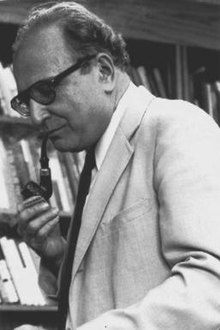
Trying to understand what is happening in the United States has led me to new areas of reading, including The Politics of Unreason: Right-Wing Extremism in America, 1790-1970 by Seymour Martin Lipset and Earl Raab. The opening paragraph of the Preface to that book:
This particular analysis of right-wing extremism in America began to emerge in reaction to the McCarthyism of the early 1950’s. Lipset’s article attempting to place that phenomenon in a historical and sociological context was the first to apply the concept of the “radical right” to American social movements.1 That article briefly surveyed some of the earlier movements from the Know-Nothings to the Ku Klux Klan, and pointed to ways in which American values made for a greater degree of political intolerance here than in other relatively stable democratic countries. (p.xv)
1. S. M. Lipset, “The Radical Right,” British Journal of Sociology, I (June1955), pp. 176-209 . . .
So back to the 1955 article I went as my starting point. The first part of the article posits several “sources of right-wing extremism in American society”.
Status and Class Politics
Class Politics: During periods of economic depression political movements or parties seeking economic reform, a redistribution of income, have gained the upper hand.
Status Politics: Periods of prosperity, full employment, with many able to improve their economic position, we have the rise of those seeking to preserve the status quo. As groups aspire to maintain or improve their social status conflicts ensue. Some groups feel frustrated at being excluded and others feel their status is threatened by new aspirants.
Enter Scapegoats
The discussion is about status politics. (Of course, in 2016 we had economic growth but at the same time many were being left behind. This was surely a significant difference from 1955.)
The political consequences of status frustrations differ considerably from those resulting from economic deprivation, in that there is no clear-cut political solution for the problem. There is little or nothing which a government can do to relieve these anxieties. It is not surprising, therefore, that the political movements which have successfully appealed to status resentments have been irrational in character, that they focus on attacking a scapegoat, which con- veniently symbolizes the threat perceived by their supporters.
Who are the scapegoats? They are ever the same . . .
Historically, in the United States, the most common scapegoats have been the minority ethnic or religious groups. Such groups have repeatedly been victims of political aggression in periods of prosperity for it is precisely in these times that status anxieties are most pressing.
Compare today, immigrants especially from the south, and Muslims.
Scapegoats: the historical pattern
Before the Civil War there was widespread anti-Catholic and anti-immigrant sentiment throughout the nation (e.g. the Know-Nothing or American Party)
Late 1880s, another period of prosperity, another anti-Catholic movement, the American Protective Association (A.P.A.).
Latter day Know-Nothingism (A.P.A.ism) in the west, was perhaps due as well to envy of the growing social and industrial strength of Catholic Americans.
In the second generation American Catholics began to attain higher industrial positions and better occupations. All through the west, they were taking their place in the professional and business world. They were among the doctors and the lawyers, the editors and the teachers of the community. Sometimes they were the leading merchants as well as the leading politicians of their locality. (Humphrey J. Desmond, The A.P.A. Movement, 1912, pp. 9-10)
1920s saw the height of the Ku Klux Klan (the 1930s Depression saw its relative demise).
1900-12, another period of high prosperity, the Progressive Movement.
Richard Hofstadter has suggested that the movement was in large measure based on the reaction of the Protestant middle class against threats to its values and status. On one hand, the rise of the “robber barons”, the great millionaires and plutocrats of the late nineteenth and early twentieth centuries, served to threaten the status of many old families, upper middle class Americans who had previously considered themselves the most important group in society. Their position was challenged by the appearance of the new millionaires who were able to outdo them in philanthropy and in their styles of life. On the other hand, this movement, like previous expressions of status politics, was opposed to immigration. It viewed the immigrant and the urban city machines based on immigrant support as a basic threat to American middle-class Protestant values. The Progressive movement had two scapegoats—the “plutocrat” millionaires, and the immigrants. (pp. 178f)
Lipset was able to write that protest movements arising out of economic depressions lack scapegoats. Scapegoats are attacked when people see a threat to “the American value system rather than its economy.”
And it is this concern with the protection of traditional American values that characterizes “status politics” as contrasted with the regard for jobs, cheap credit, or high farm prices, which have been the main emphasis of depression “class politics”. (179)
It is interesting to reflect on the above in the light of the more complex economic situation since 2016 and the dramatic change in economic hopes since the COVID-19 crisis in 2020.
The State of Tolerance in America
Depressingly, Lipset was able to write in 1955
The historical evidence, some of which has been cited above, indicates that, as compared to the citizens of a number of other countries, especially Great Britain and Scandinavia, Americans are not a tolerant people
Continue reading “America’s Radical Right in Context (Lipset Revisited)”
